Commoditisation of Container Shipping: How Carriers Can Counter or Mitigate the Impact Thereof
After exploring the concept of commoditisation and the implications thereof in previous articles, we will in this article explore ways and means through which Container carriers can counter (or at least mitigate) the debilitating impact of commoditisation of shipping services.
After understanding the implications of commoditisation for Carriers, it is obvious that the trend has significant ramifications, both operationally and commercially, having forced a change in mindset towards serving customers and driving a change in the competitive positioning of carriers in the market.
Given the nature of the change and the deep-rooted alterations it has already wrought at the industry level, it would be difficult for an individual container carrier to reverse the trend. At the same time, fierce competitive instincts and the pressure of capturing market share to ensure growth will hinder industry-wide collaboration to counter commoditisation.
Under these circumstances, the best option for carriers is to create competitive differentiators or imbue their services with value-added elements that will set them apart from the standard market offerings.
It is pertinent to note that given the current market structure, characterised by the presence of a few big global-level players, with each possessing abundant resources, any innovative feature designed by a carrier can be replicated fairly easily and within a relatively short span of time by other players, wherefore sustainable product differentiation will need a holistic and multi-pronged approach.
Carriers can adopt the following strategies:
1. New or niche products and routes:
Designing differentiated product offerings that create more value for exporters and manufacturers.
The most effective way a carrier can differentiate itself is by introducing new products or services. Considering that most major and minor trades are already covered adequately by global and regional carriers, Carriers will have to scour hard to find such options.
These options could include finding new port-to-port corridors, connecting two new markets, catering to different commodities, or offering direct connections (instead of products involving transhipment).
a) In terms of connecting new countries, this could take the form of identifying countries with significant growth potential and which are actively aiming at export-oriented growth (or with a burgeoning middle class, with aspirations of a better lifestyle and the disposable income to cater thereto – which will create demand for imported goods), thereby leading to the creation of trading ties with new countries.
Examples illustrating this point would be countries in the West Africa region, which, given their demographic advantages, are enjoying robust growth (albeit off a low base) and are also looking to widen their export baskets (or broaden their export markets), thus creating higher demand for shipping service to connect with their new trading partners. Carriers can introduce new services to connect these emerging economies with their new markets.
b) New port-port combinations involve identifying alternatives to existing ports, which offer locational or operational benefits to cargo owners, sizeable enough to induce them to start using the new port, which creates a new (and better) option to the traditional gateway ports that have hitherto served the hinterland.
An example of this is the port of Batangas in the Philippines. Manila, the biggest port in the Philippines, caters to the bulk of cargo leaving or arriving there. Given that it is located close to city limits and the high cargo volumes handled there, it at times faces congestion issues, leading to delays in handling vessels and cargo, evacuation of containers, delivery of cargo to the final destination, and a consequent increase in the total cost of ownership.
Instead, Batangas was located away from city limits and proximate to the manufacturing facilities of a few major exporters. Carriers, therefore, started calling Batangas and successfully marketed the new service as cheaper and faster.
Another example was the port of Hazira, located somewhat (not exactly) midway between the much bigger and well-established ports of Nhava Sheva and Mundra. Hazira was conceptualised to cater to the surrounding industrial areas in Surat and the Central Indian hinterland, intending to offer this cargo a port that was closer and, hence, more optimal.
Given the smaller cargo base, Hazira did not intend to compete with Nhava Sheva or Mundra but instead focused on providing efficient and faster transport connections to its target hinterland.
Within a few years of becoming fully operational, the port today has carved its niche and exceeded 0.6 million TEUs in container throughout.
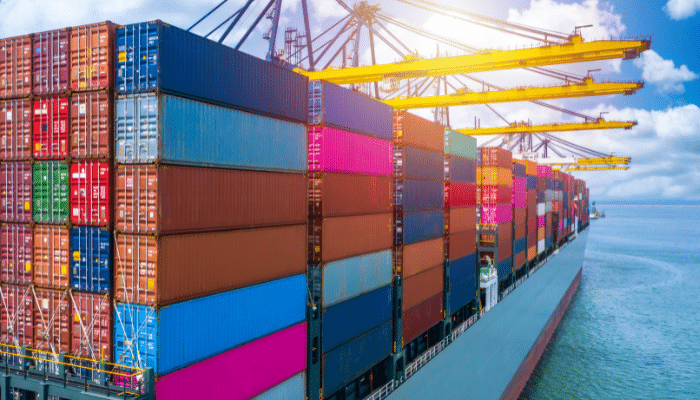
c) Direct connections are another way to offer differentiated services. Given the steady upsizing of container vessels and that mega vessels now comprise a greater proportion of the container fleet, the hub-and-spoke model is gaining popularity, resulting in more containers being transhipped. While transhipment helps the Carrier increase utilisation levels of mega vessels and rationalise expenses, enabling them to standardise services and costs (which essentially is commoditisation), its inevitable concomitant is longer transit times and a greater probability of delays (since the journey now involves two legs).
In this scenario, Carriers could evaluate corridors with a higher proportion of time-sensitive or high-value cargo, where shippers could be expected to pay a premium for superior service and design direct shipment products on these corridors, highlighting the benefits of faster lead times and greater reliability and security, all of which are intended to make the supply chain more resilient.
d) Carriers can also introduce innovative products involving multiple modes of transport, allowing them to offer shippers unique products that combine the advantages of different modes on different legs.
Examples include Sea-Air products or Sea-Rail products, where the cargo is carried by sea on one leg of the journey and then by Air or Rail. This has the advantage of providing customers with a relatively faster (or smoother or more reliable) service at a slightly higher cost.
For example, in the case of fashion apparel, which is somewhat time-sensitive, the cost of air transport will be quite high, while sea transit will involve longer transit times. In this scenario, the carrier Sea-Air product could use shipping to cover a major part of the distance and thereafter use air transport to deliver to the final destination.
The Sea-Rail option works similarly and can be quite useful in overcoming supply chain bottlenecks or chokepoints. An excellent case illustrating this was seen during the COVID-induced port congestion at US West Coast ports, where the massive queue of vessels waiting outside Long Beach and Los Angeles caused inordinate delays, and shippers were unsure about how long it would take to clear their consignments. In this situation, some carriers started calling Canadian ports (which were not impacted by congestion) and then hauled the cargo by rail to the US.
2. More flexibility for bigger customers
Offering greater leeway regarding shorter cut-offs, priority in the allocation of empty containers, space guarantees, etc.
Given the highly standardised nature of processes and workflows in international shipping and transport, most carriers offer the same cut-offs, cargo acceptance timelines, free time, etc.
Further, the fact that carrier alliances operate the majority of services of most major trade lanes means that multiple carriers have cargo sailing on the same vessel, wherefore these carriers offer the same cut-offs, gate-in times, sailings schedules, and transit times – all of which perpetuate commoditisation.
Due to this, all customers receive a standardised level of service, regardless of the carrier opted for, making them focus solely on price as a parameter for evaluating carriers.
Under these circumstances, Carriers can create a compelling competitive differentiator by offering flexibility in terms of operational processes and extended timelines. Since the sanctity of the broad process needs to be respected, such leeway can be limited only to bigger customers who control large volumes or are critical for the Carrier (because they help the carrier fill a significant proportion of the space available, which gives the carrier the option of selling the remaining space at higher spot market rates).
This would involve identifying key customers and offering them more flexible solutions to allow them more time to gate in containers, prioritising the allocation of empty containers, providing space guarantees (especially in peak season), giving them more free time, etc.
Given the larger scale, bigger exporters generally put greater emphasis on supply chain reliability and resilience rather than focussing solely on costs, wherefore it is likely that they will be amenable to paying a reasonable premium on top of prevailing freight rates for shipping services that strengthen their supply chain.
3. Use non-asset-based elements as differentiating factors
Differentiate basic customer service, streamlined processes, and better systems.
As mentioned in the previous point, container alliances control a sizeable proportion of global shipping capacity, where it logically follows that cargo booked by different carriers is transported on the same vessel. This ipso facto implies that each carrier offers similar transit times, cut-offs, sailing dates, etc.
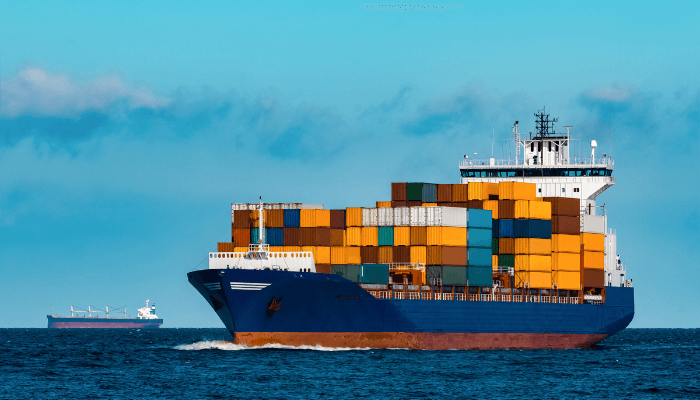
In this situation, even though the basic transport service is, in essence, the same for all members of an alliance, individual Carriers still have recourse to the option of differentiating their service offerings in terms of customer service levels, sales expertise, flexible situation-based pricing, value-added services, and pre-carriage and on-carriage transport options. Carriers can also streamline their processes to make it more convenient for shippers to do business with them, as well as replace manual processes with systems to improve transactional ease and pace.
These factors can be leveraged by Carriers to create more overall benefits for customers despite the basic transport service remaining the same, whereby the shipper will perceive the combination of smoother processes and adjustable service elements as creating additional value.
4. Reversal of the trend of operating in container alliances
Some carriers are bucking the trend of operating as part of alliances and building significant scale by themselves so they can design their own unique products and eliminate one of the factors that have led to commoditisation.
The trend of container carriers forming Alliances had gathered momentum since the early 2000s, with even the hitherto strong players who previously preferred to operate alone since deeming it expedient to join an Alliance (besides co-operating in other ways, such as slot sharing or vessel sharing agreements).
These avenues of cooperation, while making commercial sense for carriers, contributed significantly to the standardisation of shipping services.
Over the years, Carriers have come to accept such cooperation as inevitable, making it a defining characteristic of the industry. The prevalence of container alliances is such that carriers proactively seek membership in alliances to ensure steady utilisation levels and rarely operate alone.
Post the Covid pandemic, we have witnessed carriers like MSC making a strategic decision to operate independently after the announcement of their break-up of the 2M alliance with Maersk.
MSC was enabled to do this by virtue of having invested extensively in new and second-hand tonnage since 2020 – so they not only augmented their fleet rapidly but also have a regular stream of capacity flowing over the next three years – to the extent that they have not only taken over from Maersk as the biggest container carrier but also widened the gap considerably.
The build-up of scale has left MSC well poised to cover all primary and secondary markets on their own, without the need to cooperate with other carriers.
With the new-found independence, MSC can redesign its network and offer services that best serve the requirements of its customer base, while other carriers will have to find common ground with their Alliance partners.
Whilst it can by no means be assumed that other Carriers will follow MSC’s example and start operating independent of existing alliances (the constraining factor being the resources necessary to build up the scale to offer standalone services), it nevertheless remains an option available to carriers (with the most prominent ones being Maersk or CMA-CGM), especially in the post-Covid era, when they have accumulated considerable cash reserves.
5. Container carriers evolving into Integrated Logistics service providers
Carriers are investing heavily in logistics capabilities and controlling more parts of the supply chain in their quest to provide end-to-end logistics services.
Carriers like Maersk have long harboured ambitions of expanding beyond their core shipping business and offering end-to-end logistics services, a strategy that has been emulated by other carriers as well – resulting in the emergence of integrated logistics service providers (who have a presence across the supply chain rather than in just one or two components thereof).
The result is that a number of big and mid-sized container carriers now have significant logistics and port assets with matching capabilities and expertise, putting them in a position where they can offer a wider range of transport-related services.
With these forays in the logistics and ancillary sectors, container carriers have gradually evolved from being pure shipping service providers to integrated logistics service providers, with their assets and product portfolio augmented to bridge the first and last-mile gap and provide door-to-door services.
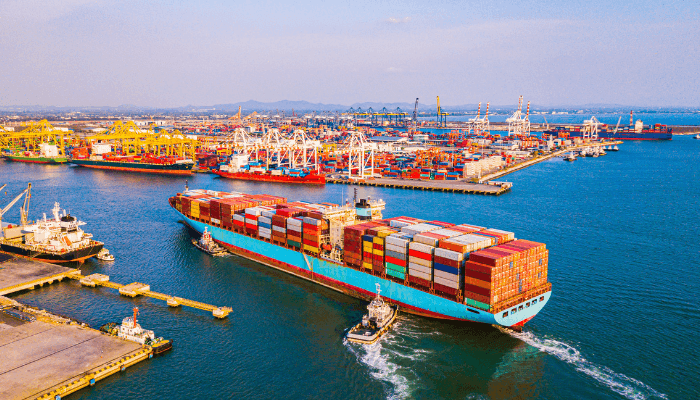
These integrated logistics service providers now own shipping vessels, aeroplanes, rail operators, road assets, inland infrastructure, and maritime terminals – enabling them to exert greater control over more parts of the supply chain and simplifying their efforts to provide a one-stop solution for all logistics and transport requirements.
This affords them greater latitude in designing solutions that are customised to meet the customer’s unique needs and thus offer differentiated services.
Exporters will obviously find it convenient to deal with one transport and logistics services vendor instead of contracting and liaising with multiple vendors for various modes (sea, road, rail) and segments of the supply chain (warehousing, customs clearance, etc.). They will perceive this as a differentiating factor.
Another advantage that will accrue to carriers is that when they handle a greater part of the customer’s supply chain, they will be so deeply embedded in the customer’s supply chain that the customer will find it difficult to change vendors, thus increasing customer stickiness.
6. Better market research and customer-level analysis
To identify emerging trends and needs, new customers, and unearth unmet or future requirements.
With the mass of paperwork generated during the course of any shipping transaction, carriers have access to a humongous amount of data regarding every aspect of their customer base, commodity profile, pricing information, etc.
The challenge lies in the fact that the data is mostly unstructured and stored in different formats (on paper or in emails, Excel files, word documents, PDF reports, etc) and in different locations (local servers, cloud platforms, physical files, personal laptops, etc).
This presents obvious difficulties when it comes to collating and analysing the information available, wherefore, companies generally are not able to glean valuable insights from the information available.
At a broader level, the shipping and logistics market is so fragmented and geographically dispersed that conducting comprehensive market studies is a complex and challenging exercise.
In recent years, with advances in technology and the advent of systems with IDP (intelligent Document Processing) and analytical capabilities, companies have the option of rigorously analysing all available data to obtain actionable insights and understand their customer’s requirements better.
Such analysis can also be used for yield optimisation and price maximisation initiatives based on the value of the service to the customer and their relative contribution to the carrier’s revenues.
This information can be used to initiate up-selling and cross-selling marketing campaigns, as well as uncover unmet needs and design solutions accordingly. With the Carrier offering complementary and/ or customised solutions, they will stand out from the standardised products available in the market.
At the macro level, the superior quality of market intelligence will enable carriers to unearth untapped segments, identify potential markets, recognise future trends, and overall understand the market better, leaving them better placed to offer customised solutions. An example can be the identification of opportunities for containerisation of commodities that were traditionally transported as bulk, and where the feasibility of which is further increased due to the container imbalance at the customer’s location.
In this instance, the carrier can target the containerisation of the commodity by offering attractive rates. The combination of the advantages of containerised transport and reasonable freight rates will make it a lucrative proposition for exporters, thus opening a new revenue stream for the carrier.
7. Eco-friendly and sustainable products
Especially for customers who have made significant commitments towards CSR and sustainability.
With increasing regulatory focus on the emissions generated by the maritime transport sector, there has been a raft of legislation aimed at curbing the carbon footprint of the shipping industry.
Governments, exporters, retailers, and consumers are becoming aware that the shipping industry is responsible for a significant share of global emissions (even though it is the most eco-friendly mode of transport) and that their demand for imported goods is a factor in increasing emissions.
Since most countries are now highly interdependent, and trading ties are too entrenched to make a complete decoupling feasible, it is not possible to reduce the international trade in goods significantly.
Consumers are therefore seeking products with a lower carbon footprint and are willing to pay a premium for such products, due to which a rapidly growing market for eco-friendly products now exists.
Simultaneously, exporters and manufacturers have also started focusing on making their supply chains greener as part of their CSR activities.
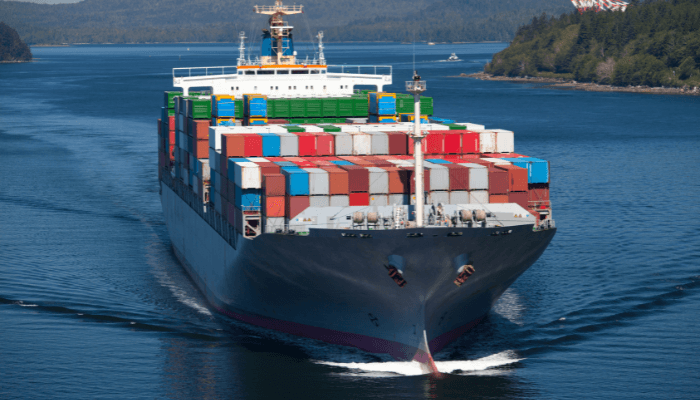
Therefore, as part of their green initiatives, these big exporters and retailers prefer transport solutions which are less polluting, both because they want to reduce their own carbon footprint and also to cater to the market segment that prefers (and also is willing to pay a premium for) such products.
Carriers can partner with these manufacturers and exporters by designing green transport solutions, which will, in turn, help the manufacturer reduce their carbon footprint and make their products more eco-friendly.
Carriers typically offer a range of green solutions, promising various levels of emission reductions, through the use of vessels that operate on LNG or bio-fuels or scrubber-equipped vessels or even carbon offsetting (where emissions are not reduced but are offset through investments in reforestation).
The nature of these green offerings makes it obvious that while they can be a source of competitive differentiation, the resources required to create them are considerable, involving heavy capex and opex – something that not all competitors can replicate easily and inexpensively.
8. Focus on holistic customer experience
While customers are nowadays willing to accept basic service levels simply because they are provided at low rates, the complexity of the international transport process means that there are various junctures in the transport chain where expert guidance and good customer service are needed, which in turn means that their overall customer experience with transport vendors is generally sub-optimal.
Also, given the numerous bottlenecks and potential chokepoints in the international transport process, cargo owners will likely need to contact the carrier’s customer service and operations teams on almost a daily basis throughout transit.
Areas in which assistance could be sought vary from the availability of containers to the extension of free time and cut-off dates to queries about documentation or commodity, rollovers and delays, correction or revisions to information submitted, and claims for damage to cargo.
Since these are all issues where human intervention will be necessary for resolution, and extensive coordination and liaising with relevant stakeholders will be required. Cargo owners will need a responsive customer service person to understand issues and provide solutions.
Carriers who take this factor into cognisance and aim to deliver a superior customer experience will be preferred by exporters over carriers with whom the customer experience is perceived as being of average quality.
9. Better customer segmentation and profiling
To identify big BCOs who prioritise service over price due to their global scale of business, the complexity of supply chains, and inventory management.
Carriers typically have a very broad and disparate customer base, with the profiles of individual customers differing in terms of factors such as scale, operational complexities, coverage requirements, variety of cargo, and transport requirements.
A standardised solution or a one-size-fits-all approach towards serving customers will prove to be ineffective in such cases, as customer needs exhibit considerable variation, warranting an individual approach and customised solutions.
Carriers will, however, need to weigh the costs of delivering customised solutions with the incremental revenue accruing therefrom while ensuring that the customer has the scale to justify the efforts and resources expended.
Therefore, carriers need to analyse their customer base to identify the biggest ones whose business might conceivably require customised solutions and, most importantly, who are capable and willing to pay a premium.
Typically, customers who avail of such services are the ones with geographically dispersed manufacturing facilities and catering to global markets, whose intricate supply chains mandate services of a level higher than the standard market offerings.
Companies such as Ikea and Walmart are good examples, as they control massive volumes, which carriers would deem lucrative enough to design comprehensive customised solutions for.
Because their manufacturing facilities are dispersed across locations with varying levels of infrastructure and connectivity, and also because they need a robust supply chain, these entities are amenable to considering innovative transport products that infuse resilience and stability therein.
10. Leveraging systems and technology
The transport and logistics industry has traditionally not been a pioneer when it comes to the adoption of technology. This is partly due to the prevalence of long-established manual processes and ways of working, as well as the sheer number of stakeholders and geographies involved, which possess vastly differing levels of technological capabilities (so, to take an example, while the Customs department in a European country might offer the option of digitising documents and submitting information online, their counterparts in developing countries might not have the technological resources or trained manpower to offer similar facilities).
The widespread adoption of technology in the transport and logistics industry is also hindered by the numerous exceptions to a process that is, at best, only very broadly standardised.
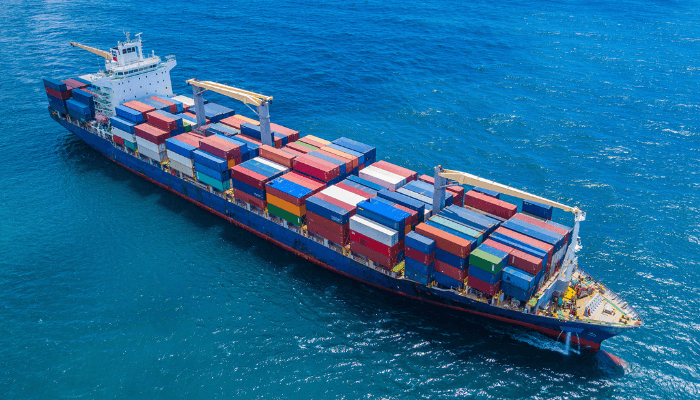
In contrast to this, the manufacturing sector has witnessed relatively greater levels of automation and implementation of technological solutions in a bid to streamline operations, optimise costs, and increase efficiency.
This mismatch between the technological capabilities of carriers and exporters can be a source of frustration for exporters, who are accustomed to a more digitised way of working, as they are constrained to adopt paper-based documentation and manual modes of working while dealing with Carriers.
Other drawbacks of not using systems are longer transaction times, delays in preparing documents, more human errors, inadvertently missing out on sharing information, etc, all of which will hinder the smooth functioning of the customer’s supply chain.
Leveraging technology can help carriers provide faster, more accurate, and more effective services, complementing the customers’ automated workflows and creating a compelling value proposition.
11. Transparency in pricing structure
Communicating the rationale behind various surcharges and accessorials levied, as well as explaining reasons for the quantum thereof, so exporters are more amenable to paying higher prices, as they associate higher prices with better quality and are convinced that the prices are commensurate with the value or service provided.
This is more a communication initiative rather than an actual distinctive commercial differentiator, which essentially involves the Carrier being transparent about its pricing structure and various components thereof (not to a granular level but at least in terms of ancillary costs), whose benefits customers might not be aware of (and hence resent having to pay for, and instead prefer to opt for the carriers basic shipping service).
These ancillary services can inter alia include space guarantees during peak season, additional free time, and equipment availability (especially in equipment deficit locations), all of which involve certain costs.
Where carriers are able to communicate clearly the value of such services and quantify the benefits thereof, thus facilitating a comparative evaluation of the incremental costs vis a vis the anticipated value, the shipper will be much better placed to make a straightforward assessment and decide whether to opt for the service or not.
This can dispel exporter’s misconceptions and understand the value of superior quality of service.
You might also like to read-
- 15 Reasons For Commoditisation Of The Container Shipping Industry
- Commoditisation of Container Shipping: Implications for Carriers and Cargo owners
- How Shippers Select Container Carriers – 11 Important Factors
- 17 Benefits Of Using Logistics Technology Solutions To Customers And Supply Chains
- What is Nearshoring in Shipping And Logistics – Advantages and Disadvantages
Disclaimer: The authors’ views expressed in this article do not necessarily reflect the views of Marine Insight. Data and charts, if used, in the article have been sourced from available information and have not been authenticated by any statutory authority. The author and Marine Insight do not claim it to be accurate nor accept any responsibility for the same. The views constitute only the opinions and do not constitute any guidelines or recommendations on any course of action to be followed by the reader.
The article or images cannot be reproduced, copied, shared, or used in any form without the permission of the author and Marine Insight.
Do you have info to share with us ? Suggest a correction

About Author
Jitendra has over 20 years of international experience in the Container Shipping, Ports and Logistics industry, spanning 3 diverse geographies, wherein he has been involved in the commercial and strategic aspects of the container business.
Latest Maritime law Articles You Would Like:
Latest News
- What is the Purpose of DG Shipping?
- What are Logistics Risks?
- How Port and Terminal Operators Can Control Emissions?
- Minimum Quantity Commitment (MQC) and Liquidated Damages in Container Shipping: Concept and Relevance
- MARPOL (The International Convention for Prevention of Marine Pollution For Ships): The Ultimate Guide
- The Ultimate Shipping Container Dimensions Guide
Subscribe To Our Newsletters
By subscribing, you agree to our Privacy Policy and may receive occasional deal communications; you can unsubscribe anytime.















